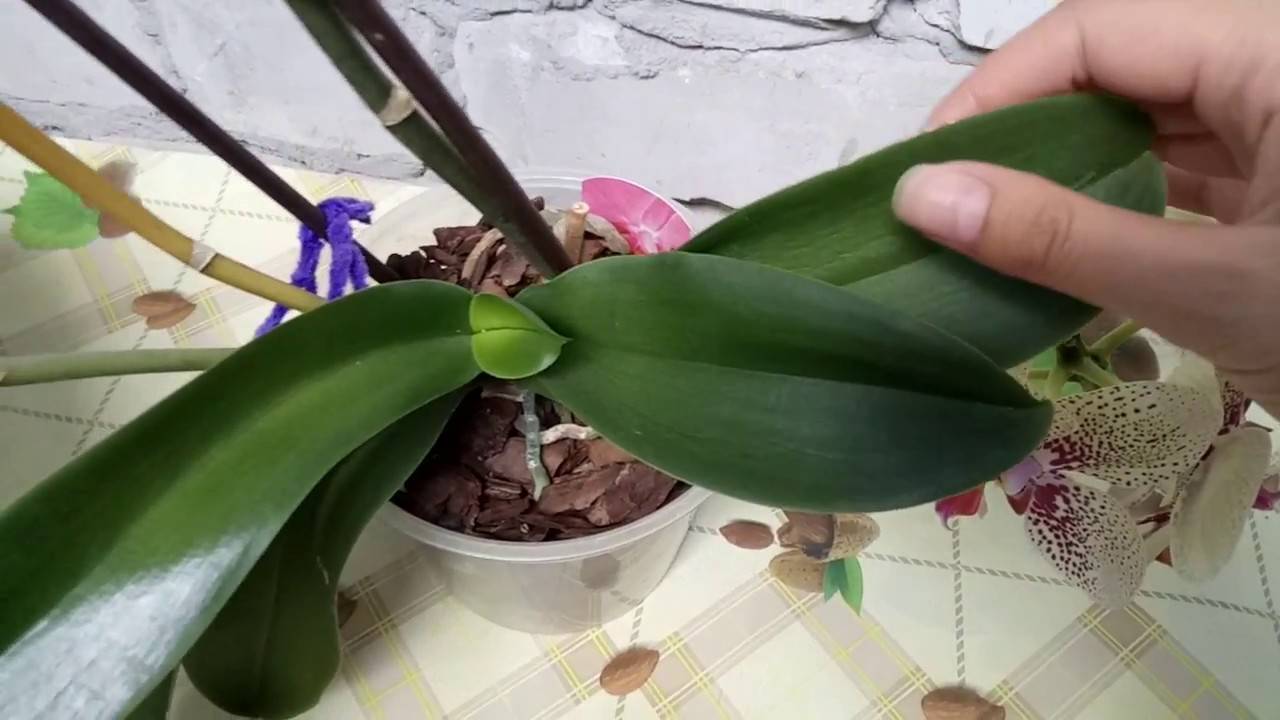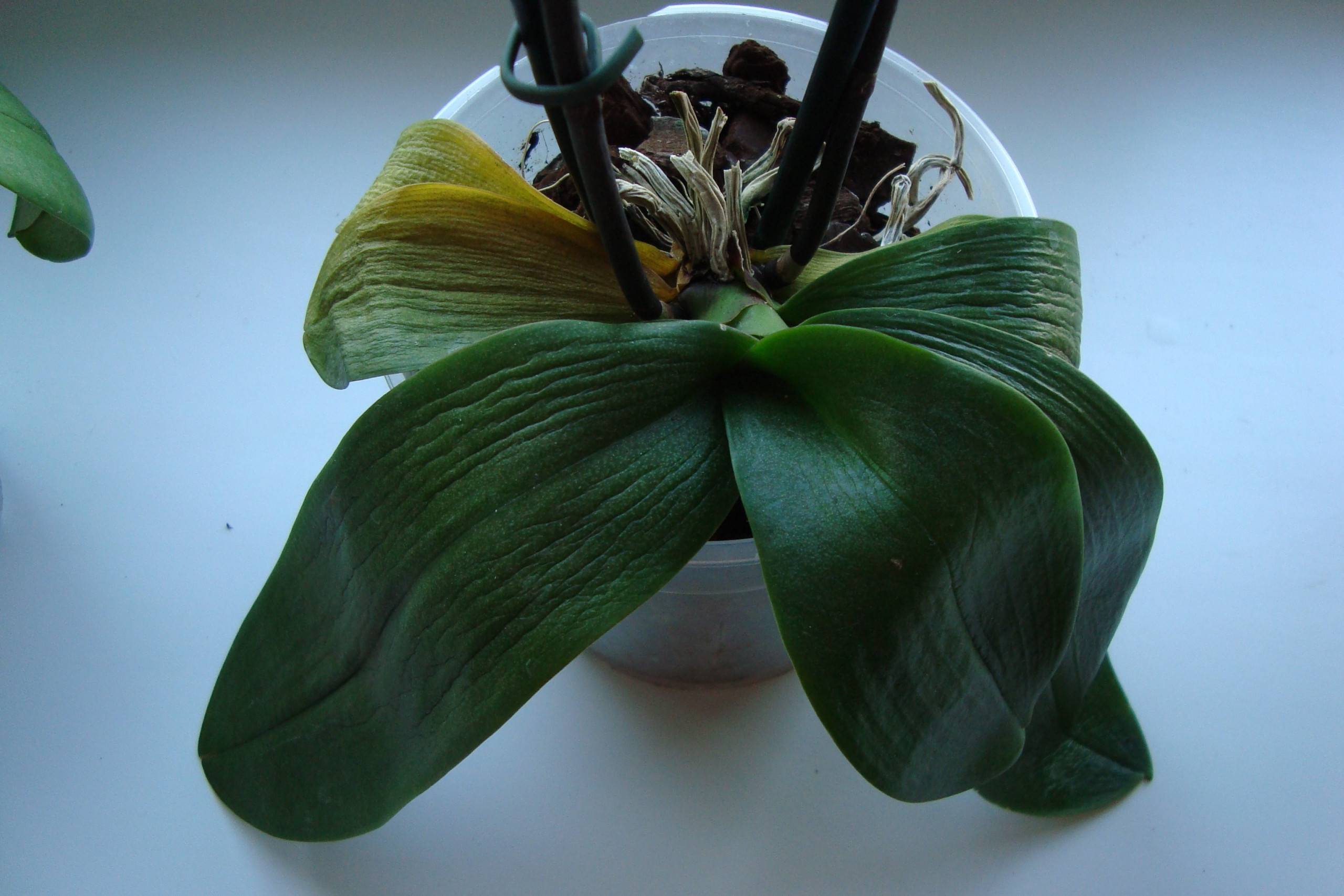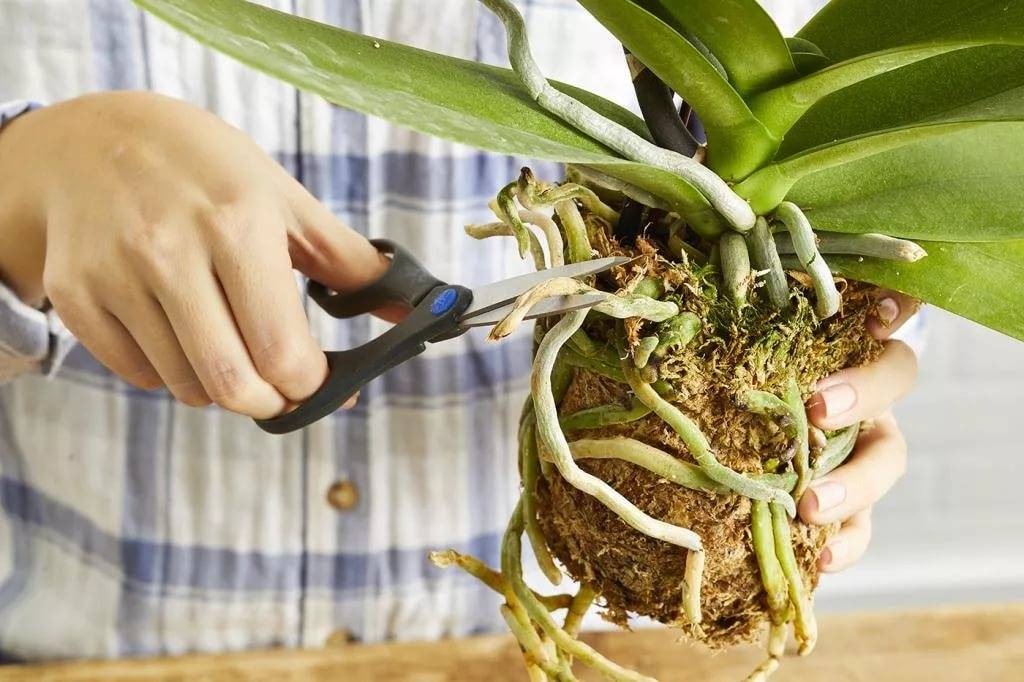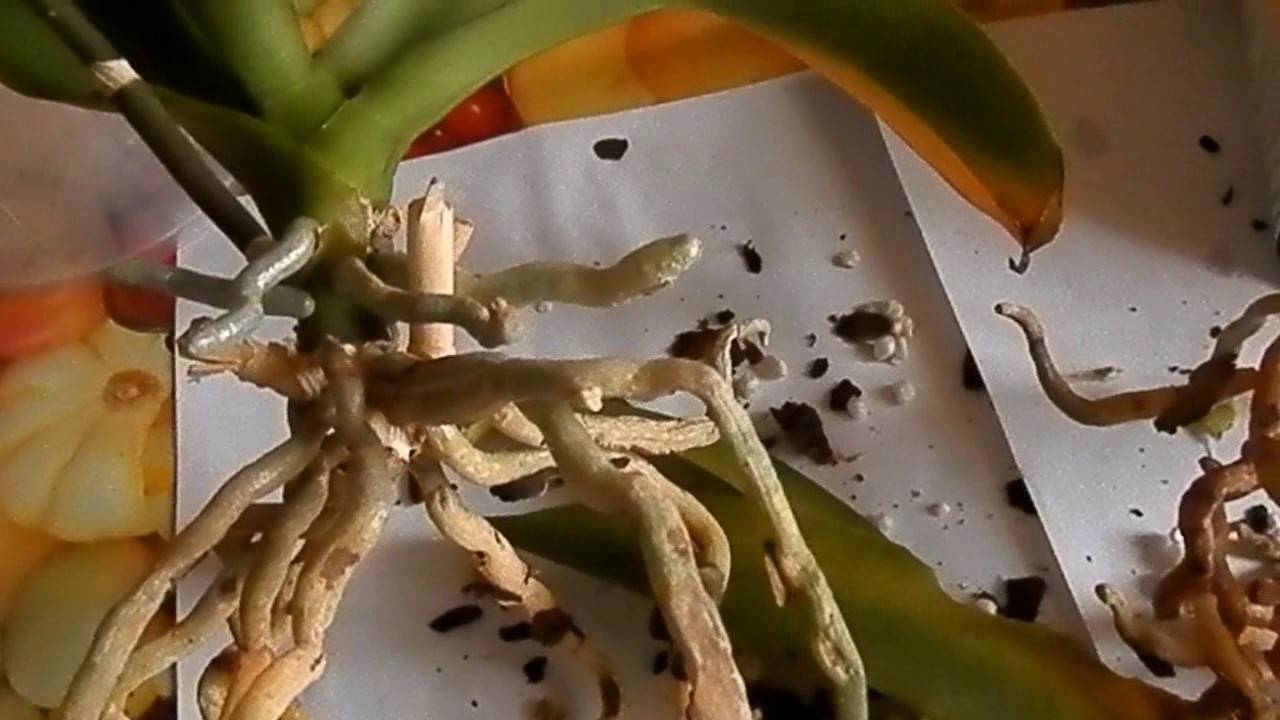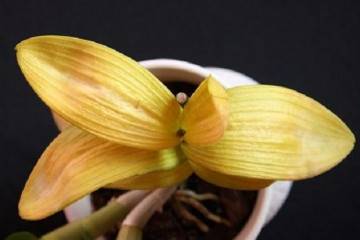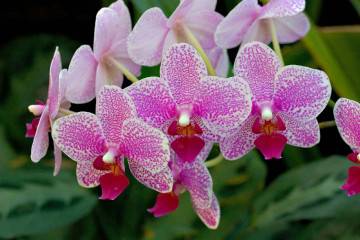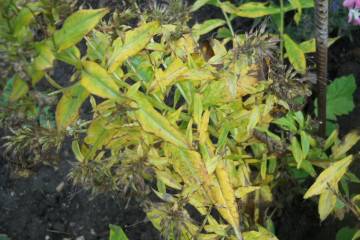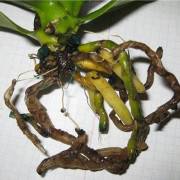Orchid leaves lost their turgor and wrinkle: what to do to restore
Content:
A blooming orchid is a truly royal gift. She has delightful butterfly flowers, polished emerald leaves. Even aerial roots give the plant extra charm. But it often becomes noticeable that the orchid leaves have lost their turgor and wrinkle, experienced florists will tell you what to do in such a situation.
The main reasons for the loss of turgor
In a healthy plant, the leaf plates are shiny, smooth and dense. But for various reasons, the turgor of the leaves can weaken. They become shriveled, lethargic. The process is accompanied by a change in color.
So, the orchid loses the turgor of the leaves, what should I do to correct the situation? First of all, find the reason. There are several of them. It:
- decay of roots, death of the root system, which is a consequence of excessive watering;
- lack of moisture, which inhibits the metabolic processes of the flower;
- infectious diseases;
- excessive soil density;
- violation of conditions of detention (proximity of heating batteries, direct sunlight).
The last two reasons are solved quite simply: the purchased (received as a gift) flower should be immediately transplanted into the soil for orchids, put the pot away from heating appliances, and cover it from the sun.
Sometimes the loss of leaf density is associated with a change in the place of keeping. Greenhouse conditions are very different from apartment conditions. In special nurseries for phalaenopsis, a tropical climate is created. Therefore, during acclimatization after the move, the flower often gets sick. Over time, in the absence of other factors, the appearance of the plant is restored.
Often, the loss of turgor is associated with a violation of transportation rules. Simply put, frostbite of the ground part of the flower can occur. In this case, the damaged leaves are removed. There is also a technique for removing a frostbitten leaf. To do this, an incision is made at the top of the leaf plate, the halves are torn with both hands to the petiole and gently torn off. Places of cut (removal) are processed with crushed coal, cinnamon powder.
Humidity
Phalaenopsis is a resident of the tropics. In its natural environment, it takes moisture from the air. The plant as a whole has an absorbency. Moreover, in the spongy aerial roots, the moisture reserve is designed for a short-term decrease in the humidity of the surrounding air.
A home orchid is planted in a special soil, or rather in a substrate from tree bark. Therefore, it is wrong to assume that after watering it will absorb water and then give it back to the flower. The substrate will dry out almost immediately. But this does not mean that the flower needs to be watered again. The roots will absorb enough water. Two or three days of this supply will be enough to recharge the ground part. After watering, the water from the pallet should be poured out, since excess moisture, especially remaining in the pallet, will very soon lead to root rot.
It will be correct to water the orchid 2-3 times a week with soft water at room temperature, and spray abundantly on the remaining days. Irrigation will help remove dust from the leaf plates and saturate them and aerial roots with moisture.
The irrigation and watering scheme is recommended. Changes in one direction or the other depend on the conditions of the flower. In any case, it is better to underfill the water than to pour it over.
Insufficient watering leads to equally disastrous consequences.Violations in this case occur at the cellular level. Due to a lack of moisture, the volume of cytoplasm inside the cells decreases, the cell walls lose their elasticity. As a result, skinny cells and a shriveled leaf made up of these cells. With prolonged drought, the leaves turn yellow, dry out, and fall off. The loss of a large amount of moisture leads to a disruption in the process of photosynthesis.
Dense soil
In nature, no obstacles prevent the roots from receiving moisture, saturating with oxygen, and participating in photosynthesis. Rather, to provide the whole plant with all this. The home flower grows in the substrate in which it was planted. If at first it was loose and fully met the requirements of phalaenopsis, then over time it becomes denser. It is becoming more and more difficult for the roots to fulfill their functions.
In addition, dense soil retains excess moisture, and this leads to root rot. As a result, the turgor of the orchid leaves is lost, and yellowing of the leaves is observed. If you do not take action, the root system will rot completely, and with it the plant itself will disappear. To avoid this problem, the flower should be transplanted every 2 years into a new substrate.
Overheating of roots
Sometimes overheating of the roots leads to a loss of leaf elasticity. This happens if the pot:
- stands in the immediate vicinity of heating appliances;
- is in direct sunlight.
In both cases, the balance between evaporation (absorption of roots) and the ground part of the plant is disturbed.
In some cases, overheating leads to sintering of the roots. Violation of the structure of the shell of underground parts leads to their rotting. Not getting nourishment from the roots, the leaves also suffer. Violations occur at the cellular level. Sometimes it is not possible to restore the plant.
Other
In addition to the above, there are other reasons for the loss of leaf turgor in phalaenopsis. Some of them are temporary, that is, they pass by themselves. There are also dangerous ones. These are pests, diseases or improper actions when caring for a flower.
In the first case, it can be:
- transfer from the humid environment of the greenhouse to the airspace of the apartment;
- natural self-rejuvenation (with age, the lower leaves dry up and fall off);
- long flowering.
These reasons go away by themselves.
Dangerous ones can be distinguished:
- excessive pruning of roots. The remaining roots may not be enough to feed the entire plant;
- excess fertilizer;
- layering of dust on the sheet plate. A layer of dust on the leaf interferes with the process of photosynthesis, since it is difficult for the plant to absorb solar energy;
- pest attack. This happens if the flower is weakened or adjacent to the affected plants.
- infection. This nuisance also depends on the well-being of the orchid. Most often, infection occurs in the nursery.
Turgor recovery options
The orchid has lost the elasticity of the leaves, moreover, they have become yellow, wrinkled, what to do? To understand how to restore the turgor of the leaves in the phalaenopsis orchid, first of all, you need to find out the reason. Given the fairly strong immunity of cultural representatives, there is a certain period of time to analyze the possible options:
- the first step is to establish a watering and spraying regime. If this was the case, the plant will quickly recover;
- eliminate food shortages;
- revise the root system;
- replace the substrate;
- move the pot to a more suitable place.
Additionally, you can advise:
- use a root formation stimulator ("Epin", "Kornevin");
- wipe the sheet plates with a solution of succinic acid;
- add succinic acid to water for irrigation.
If the reason for the loss of leaf turgor was waterlogging of the substrate, the plant should be dried.
Examples after transplant
The shipping substrate is not designed for future use. This is, most often, compacted sphagnum or peat tablet (pot). The soil is intended only to keep the roots moist and then for a short time. Often, rotten water serves as bait for various fungi.
Even if the flower looks healthy, a transplant is necessary. Only in the process of revising the root system can the affected areas be detected and disposed of. The stronger the damage, the longer the plant will recover. Sometimes you can't save your favorite flower.
Orchid treatment and care
Plant care begins from the moment of purchase. Often the usual care is not enough for him, he has to urgently save the flower.
If there are signs of oversaturation with moisture, then the roots are most likely not healthy and there is a risk of mycosis development. It is accompanied by the rapid wilting of the leaves from below. To restore elasticity to the leaves, prevention sometimes helps - treatment with antifungal drugs during transplantation. Places of cuts should be sprinkled with crushed coal or cinnamon powder. Further, it is worth adhering to the norms of watering, feeding.
By spots and other changes on the leaves and stems, one can understand the presence of infectious diseases (fungi, bacteria). Viral infection comes from infected inventory. The process is irreversible. Fungal lesions occur when the temperature of the content drops.
Weak plants become the object of attack by pathogenic bacteria. This does not happen often, but it is rarely possible to save the plant. Initially, you can fight bacterial infections with copper sulfate.
Phalaenopsis has luxurious flowering, so the exotic has a lot of admirers. There are also mistakes in grooming, especially for beginners. But, if desired, even a diseased plant can be saved. The beautiful orchid will thank you with exuberant flowering.
